#Splice Vater
Explore tagged Tumblr posts
Text
Doctor who S14 E3 ‘Boom’ Spoiler!!
i wish wish wish the episodes were longer…
Boom was the best of all the episodes so far for me, but that ending still just felt rushed. I wished we’d of sat in Splice’s grief for longer. I genuinely adored her perspective and acceptance of death at the end, but she was a child we should have seen her be sad before she reached that point of acceptance.
I don’t know but i do think that’s going to be my biggest complaint of this series, the episodes are too short (unless rtd complete fucks it all up and then i’ll have bigger complaints lol)
#doctor who spoilers#doctor who#doctor who splice#also the doctor was right#mundy sunday#would be a great name#mundy flynn#Splice Vater#John Francis Vater#ruby sunday#always a fan of the love of a father as a plot point#probs because i can’t relate#🥲🥲#steven moffat#russell t davies#doctor who series 14#doctor who boom
15 notes
·
View notes
Text
"The Doctor isn't a name."
This coming from a girl named Splice??
"And I'm not even a doctor."
*stamps foot indignantly* YES, YOU ARE! You LITERALLY have several medical degrees, Doctor!

8 notes
·
View notes
Text
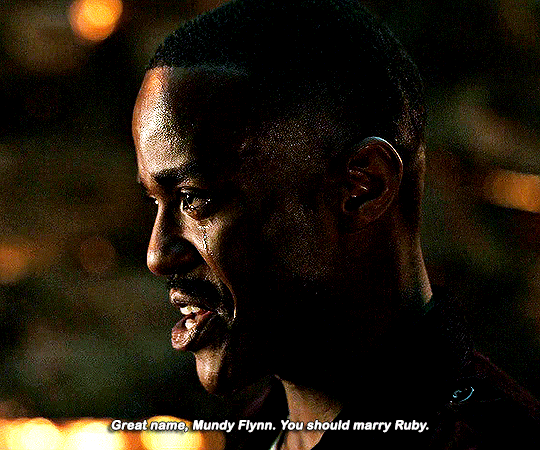
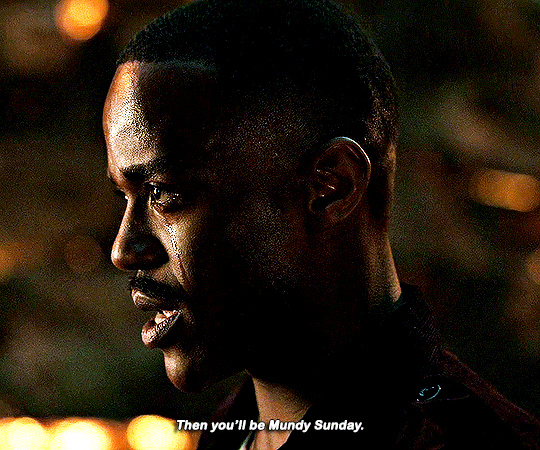
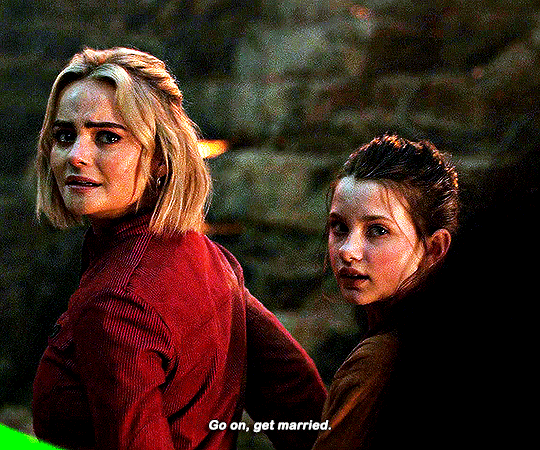
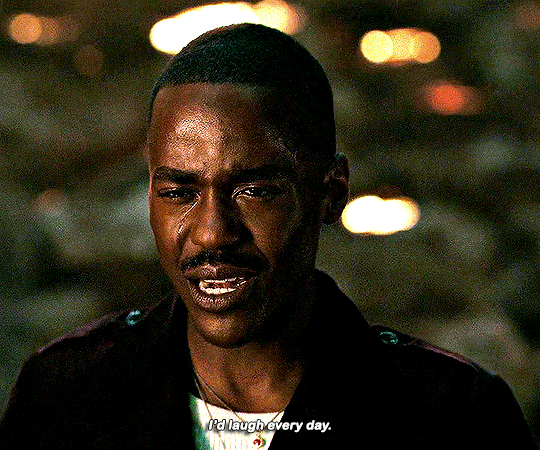
DOCTOR WHO S01E03 Boom
#dwedit#doctor who#usertennant#userteri#userdiana#usertreena#fifteenth doctor#ruby sunday#splice alison vater#*#as far as im concerned this is proof ruby is gay
5K notes
·
View notes
Text
Boom!
In the opening scene, we’re told that nobody ever sees the Kastarians. Is there anyone who didn’t work out the twist immediately?
The whole premise of this episode is great. The Doctor unable to move; Ruby’s first planet; capitalism as the enemy; killer AI ambulances; all good. But some of the actual dialogue is quite ropey. And that mine should explode at least 50 times during the episode.
The arrival of Splice doesn’t improve things. She’s not well written or acted, and apparently very stupid if she can’t notice her dad is a hologram.
The whole setup that leads to Ruby being shot is rather neat and using the dead Vater to end the situation is good too.
“Do you get-get-get it” is one of the stupidest things any Doctor has said. And why does he hug Mundy? At what point did she stop being an antagonist or do anything useful or good? The very end got me though - I do love a bit of Philip Larkin.
Next time: creepy goings-on in Wales.
0 notes
Text
TDP 1262: Disney Who Boom #Doctorwho
https://bbvproductions.co.uk/products/Faction-Paradox-The-Confession-of-Brother-Signet-AUDIO-DOWNLOAD-p389922366
Boom is the third episode of Series 14 of Doctor Who. It was released on May 17 2024 on Disney+ and is set to be released on May 18 2024 on BBC One.
Contents
1Synopsis
2Plot
3Cast
4Crew
5Worldbuilding
6Notes
6.1Comparison between BBC and Disney+ versions
6.2Myths
6.3Filming Locations
6.4Ratings
6.5Production errors
7Continuity
Synopsis
Caught in the middle of a devastating war on Kastarion 3, the Doctor is trapped when he steps on a landmine. Can he save himself, Ruby, and the entire planet - without moving?
Plot
The Doctor and Ruby land upon a planet engulfed by warfare.
As the doctor pokes his head out of the tardis whilst Ruby is getting ready, he hears trouble, grabs his coat, and runs out to save the day... except maybe not.
As the doctor is dashing his way through the battlefield, he accidently stands upon a landmine.
Ruby hears the Doctor singing 'The skye boat song' (A nod to the second doctor), and runs to find him stood with one leg on the landmine and one leg in the air.
The doctor instructs Ruby to go find a rock, or something else heavy, so that he can counterbalance his weight when he moves, and try and put his foot down.
Ruby finds a strange heavy object that she assumes to be an urn, however soon finds out it's the compressed tissue of a solider.
The Doctor sees that Ruby finds the urn-like object and asks her to throw it into her other hand.
Ruby is then seen a bit hesitant to do it but ends up doing it anyway. The Doctor calculates the weight of the object and then asks for Ruby to chuck it to him.
*More Details Soon*
Cast
The Doctor - Ncuti Gatwa
Ruby Sunday - Millie Gibson
John Francis Vater - Joe Anderson
Carson - Majid Mehdizadeh-Valoujerdy
Splice Alison Vater - Caoilinn Springall
Mundy Flynn - Varada Sethu
Canterbury James Olliphant -
A new Tin Dog Podcast
0 notes
Text
So I commented this on the Eruditorum Press review for this but I feel like I should maybe include it here too:
So the good points: great concept, good use of peril, blind Vater with his ragged blindfold, helmet and BFG is an image straight out of 2000AD, as indeed are the evil capitalist ambulances. As someone who considers The Greatest Show in the Galaxy a fave because of its similarly zarjaz aesthetics, I loved that. Ncuti continues to be amazing. I love that the Doctor calls people ‘gyal’ now. Also, I’m wondering which incarnation of the Doctor hung out with Larkin…
However…well, people have mentioned the lesbian gymkhana line, and I would also ask that the off-camera Canto/Posh Graham interaction be considered another example of Moffat’s clodhopping, try-hard approach to queer inclusion. ‘Sad songs for heartbroken lesbians’ landed so much better in The Devil’s Chord because everyone in that scene reads as part of the queer community (even if we don’t know, yet, exactly which way Ruby swings), whereas these lines felt very much like those of an outsider. It’s giving Gavin and Stacey, tbqfh.
What really unsettled me, though, was the Doctor breathlessly singing the virtues of ‘parent power’ at the end. Maybe that would have hit differently in another week, one where the UK government hadn’t just introduced a new Section 28 in the name of empowering the sort of parents who should have the least amount of power, but it just seemed a bit too close to reproductive futurism to me. And it gets worse the more I think about it. Oh, so you got special dispensation to bring your kid to an active warzone, John Francis? Who’s that for? Coz it reads to me like you putting your kid in danger to satisfy your own emotional needs, which is very much Not Cool. I would like to have seen that be interrogated more, and given how much older the actress playing Splice was than the way the character was written I think that could have been conveyed by making her a little surlier and a little less in awe of Daddy.
On the other hand you can argue that it is a family show and it’s nice to give dads a hero moment, probably helps them and their kids bond a little…but then I come back to that Tom Baker story about meeting the guy who used to be in a boys’ home, whose residents were probably only too aware that no, actually, not all parents come through for their children. How would they feel, watching an ending like that? Would it still make Saturday good?
Mining Gold
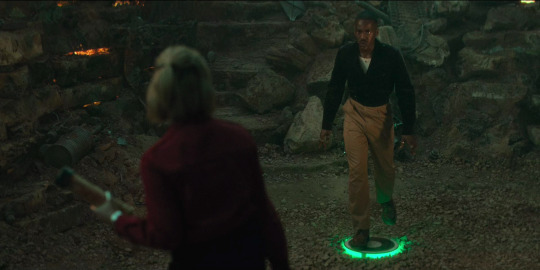
In his 2012 stand-up special “New In Town,” John Mulaney quipped that he “always thought quicksand was going to be a much bigger problem than it turned out to be.” This sentiment seems to have rung true with people online. Quicksand was such a big deal in media in the ‘80s and ‘90s. Who could forget Westley jumping headlong into quicksand to save Buttercup in “The Princess Bride?” Remember the first time you saved Mario from sinking deep into golden sands? Yet in real life, very little quicksand. While I am sure there are parts of the world that grapple with quicksand, it’s more of a trope than anything. Trapping our heroes allows storytellers to show who these characters are under pressure. While Doctor Who has its share of great escapes, it’s also prone to using capture to pad time. But isn’t that a cynical view? Can’t trapping our heroes also give the narrative a moment to breathe?
Quicksand is the perfect type of trap because it’s a ticking clock that must be treated with attention and care. Characters must slow down and assess their situation. It’s odd then that Doctor Who has never used quicksand in the show proper. But it’s just a placeholder. You could throw someone into the Timelash. The Fourth Doctor had to shoot a rope while standing over a pit of horda. Or again with the Fourth Doctor when he stepped on a landmine. But that last one is different, isn’t it? The horda and Timelash are as real as the Swamp of Sandness and the Bog of Eternal Stench. But landmines are very real. And in some parts of the world, a horrific day-to-day reality.
Returning after a seven-year absence, Steven Moffat brings the Doctor back into the minefield with “Boom.” But unlike Doctor Who’s last episode named after an explosive onomatopoeia, “Kerblam!”, this episode aims to chastise capitalism’s role in atrocity, not give it a free pass. Also making a comeback are a few Moffat staples- Villengard, the Anglican Marines, and stupid children. Each does their part to build a narrative mirroring the current political climate. But have any of Moffat’s less celebrated qualities returned along with him? Will he fall into his own trappings as a writer? Is this trope just padding out time? Or can a bottle episode become an instant classic?
Coming off the heels of last week’s manic “The Devil’s Chord,” the show was due a bit of a breather. While I’m all for bombast it’s nice to know this thing has an off switch. I already saw someone on Instagram who disagrees wholeheartedly. In their words “Boom? More like BORING,” so I imagine this one won’t be popular among dullards and the chronically contrarian crowd. But as an old, I appreciated the slower pacing and the emphasis on emotion. If you need a constant source of laser swords and loud noises, allow me to quote the Third Doctor- “Don't worry, Brigadier. People will be shooting at you soon.” Luckily, Billy No-Mates and his five Instagram followers appear to be in the minority. Most everyone I’ve talked to absolutely loved this episode.
The one issue I’ve seen fans bring up that holds any kind of water has been the conversation around faith. The inclusion of the Anglican Marines introduces a religious angle that some have criticised as preachy and offensive. In the past Moffat has used the Anglicans to various ends. Spanning across two centuries, the Anglicans we’ve met so far have come in numerous forms. Sometimes they’re allies of the Doctor, and at other times, they’re a fanatic organisation hellbent on stopping the Doctor at every turn. This time, however, the Doctor and they cross paths presumably by happenstance. (More on why I say presumably later.) This group of Marines are already in a deep conflict with an elusive enemy, which they appear to be losing. Despite these losses, they keep their faith. But it’s hard to keep faith when your enemy is as invisible as your god.
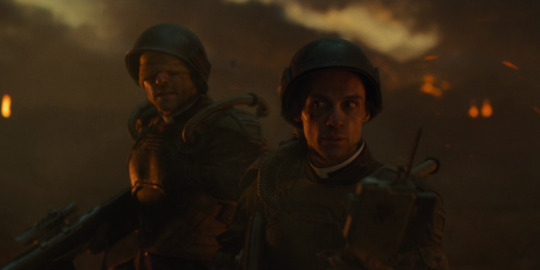
The two soldiers we’re introduced to are Carson and John Francis Vater. Not as in they’re married like the Fat One and the Thin One couple from “A Good Man Goes To War,” but rather that Carson only gets the one name. As names go, John Francis Vater is akin to purple hair in an anime- total protagonist vibes. Vater even has a daughter named Splice living back on base. He has a cute “save the cat,” moment when he tells Splice to brush her manky teeth. Which is why when he dies, it feels like there’s still more to his story. Unfortunately for Carson, he exists to illustrate the way the Villengard smartmines on Kastarion 3 operate. As it turns out, it’s pretty quick, rather violent, and kind of pretty. Even more unfortunately for Vader, he is now essentially lost as Carson was acting as his eyes due to temporary blindness.
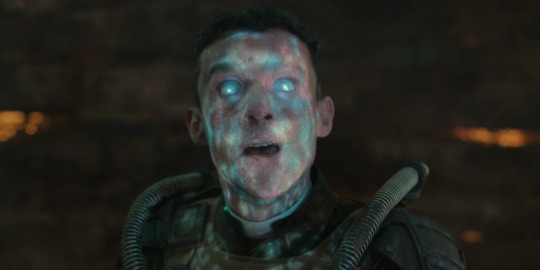
It’s never really explained why the Doctor and Ruby are parked on the planet. Presumably, it’s the Doctor doing his usual “land wherever and explore,” approach. But it’s the death of Vater that draws the Doctor and Ruby into the action. After lifting the veil from his injured eyes, Vater’s injury draws the attention of a Villengard Automated Ambulance Unit with the video face of Susan Twist. Having assessed that Vater’s recovery time would be too big of a drain on resources the ambulance terminates him. The Doctor comes running at the sound of Vater’s scream but finds nothing but an empty crater and a smartmine under his right foot. It’s the inclusion of Susan Twist here that makes me wonder if this isn’t part of some greater plan. Pretty obvious, really. Also, didn’t a big portion of Moffat’s last episode also take place in a crater?
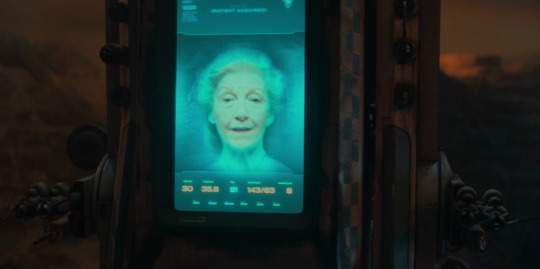
The Doctor’s voice carries out along the horizon with a mournful rendition of “The Skye Boat Song.” It tells of the journey Bonnie Prince Charles took from Benbecula to Skye after his defeat at the Battle of Culloden, thus spelling the end for the Jacobites. This worked for me on several fronts. As a fan of the Second Doctor, I admired the nod to his past. I also enjoyed the reference to Ncuti Gatwa’s Scottish identity. The forlorn quality of his singing reminded me of the Master playing the Skye Boat Song in “The Power of the Doctor,” which was one of the better parts of that story. I was also grateful that they didn’t undercut the tension with a pop song, or something truly cringe, like quoting from Harry Potter.
The Doctor is singing to calm himself and hopefully delay the bomb until he can come up with a new plan. But it’s this singing that draws Ruby to his location. Together the two of them must move their bodies in sync to a rhythm so the Doctor can rest his leg. In yet another contrast to “The Devil’s Chord,” music is being used in an entirely different manner. But this time, the Doctor’s dance partner, Ruby Sunday, is less complimentary and more complicated. The Doctor faces death all the time, but seeing Ruby put in harm’s way raises the Doctor’s blood pressure. The adrenaline becomes harder to control. And his bio-signs become easier for the smartmine to detect. Because of this, the Doctor’s emotions are raw and prickly, another stark contrast from last week. He chastises Ruby for not doing as he tells her, but she ignores him because she’s got her own ideas about what she is and isn’t allowed to do. I was getting shades of Amy Pond from Ruby in this one, and considering the author, that makes sense.
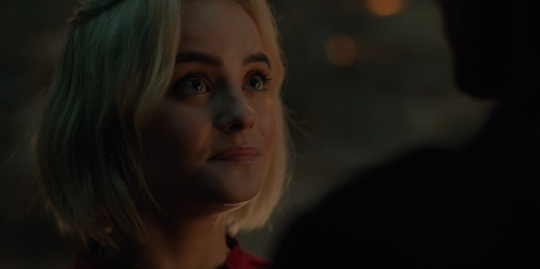
If you’ve ever heard me say that I wanted the chance for Jodie Whittaker to get mean, or show anger, this is precisely the kind of depiction of the Doctor I meant. In many ways, Ncuti is the same brand of golden retriever adorable as Whittaker, only here they’ve allowed him to show that he’s capable of a depth of emotion. The Doctor has an authoritarian streak that he hides well, but in times of stress, the walls begin to fall away and you see the complicated Time Lord underneath the fish fingers and custard, the floppy hair, and the eccentric fit. This is exactly the kind of episode I wanted to see Ncuti get to do. I’ve seen him deal with heavy subjects in “Sex Education,” I’m glad they didn’t just hire him because he’s hot and dripping charisma. He’s also incredibly capable of going into dark places.
While looking for a rock to help the Doctor balance his dangling left leg, Ruby happens upon the “smelted,” remains of Vater. The Ambulance sort of formed and condensed Vater’s body into a tube shape topped with a nameplate and a hologram projector containing an AI facsimile of Vater’s consciousness. And I’ll say it because everyone’s waiting for me to say it- it’s an actual fleshlight. There, I said the thing. Are you happy? Is this what you wanted from me? Are you not entertained? I’d like to pretend I was so wrapped up in the episode that I didn’t think it, but I absolutely did. It’s VOR all over again. I got over it pretty fast.
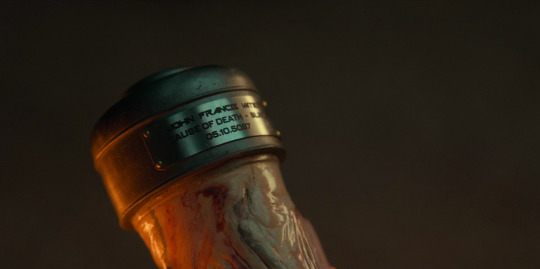
That’s the way good Doctor Who goes, really. The little hang-ups are more like snags when you’re moving along. It’s easier to look past the nitpicks and grievances when there’s so much more at play. When Doctor Who is bad, all it has are its nitpicks and grievances and that’s a real sadness when that happens because we’re no longer watching Doctor Who, we’re watching the background go by. We’re admiring the wallpaper because just because the writers phoned it in, doesn’t mean the set designers did. But this is Doctor Who firing on all cylinders.
We are however getting into the realm of one of my nitpicks about this episode and that’s Splice. Because she lost her mother, her dad, Vater, has special permission to let her live on base. The issue I have is that I wasn’t joking earlier when I said she’s stupid. I don’t say this to badmouth the little girl playing her, as she was good. I also don’t mean to denigrate the script. What I don’t understand is why is she so old? That may seem like a weird question because kids come in all sorts of ages, but this one is little kids stupid. I found it hard to believe that a girl of her age would confuse a hologram for her father. I get that she might be fooled by the voice and I can even believe that she would be foolish enough to wander into a battlefield to find him, but I’ve never once seen my dad looking like a translucent blue hologram. This is why I say she’s too old. An older kid would have figured it out. They should have either changed her dialogue or cast someone younger. Otherwise, she’s a perfectly fine character.
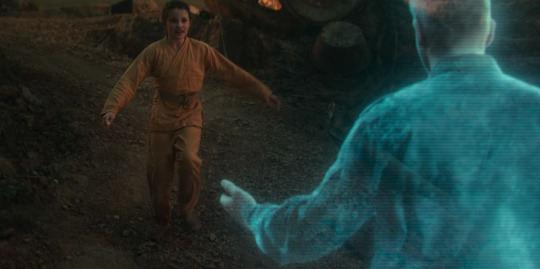
Splice’s emotional reaction draws the attention of another Anglican Marine named Mundy Flynn. Immediately my Whovian brain was doing backflips at the sudden appearance of Varada Sethu. For those of you not in the know, Sethu is planned to be a companion in season 2 next year. Seeing her this early was very exciting. Was this an Oswin Oswald scenario or a Martha’s cousin dying at Canary Warf scenario? Did they enjoy working with Varada so much that they created a character for her in the next season or is this some wibbly wobbly sort of thing? Well, as it turns out, it’s a wibbly wobbly thing. I didn’t learn this from the show, however. I learned it from Doctor Who’s social media. And honestly, I really wish they’d have just left us to wonder on this one. Would it have killed them to leave an air of mystery around her character? There’s still a bit of mystery, but I feel like they’re holding people’s hands a bit too much. I guess they’re afraid people’s imaginations will run too wild and we’ll set ourselves up for disappointment. They know who their audience is. But still, I like the not knowing part. I like the speculation.
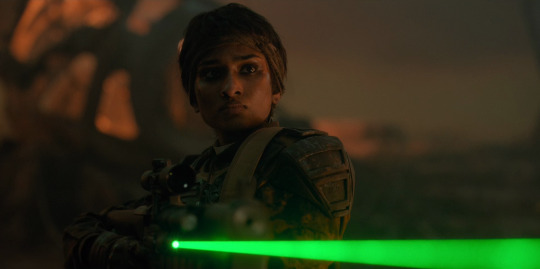
Mundy sees the Doctor holding the remains of Vater and commands him to drop them. But if the Doctor drops the remains, he risks setting off the mine. But even worse, if the mine goes off, it will turn him into the explosion. The Doctor refers to himself as a ”complex spacetime event,” indicating that if he were to explode, it could take out half of the planet. But Mundy isn’t convinced and tries to shoot the Doctor’s arm to make him drop the tube. Sensing combat, the Ambulance bots start looking for the injured to either heal or put out of their misery. Releasing her mistake, Mundy commands Ruby to shoot her in the arm in order to draw the ambulance away from the Doctor, but in her hesitation, Ruby is mistaken for an enemy and shot by Mundy’s comrade Canto who arrives late on the scene.
While we’re on the subject of Ruby, I wanted to point out that I found it a bit odd that Kastarion 3 was her first experience on an alien planet. Sure this is only her fourth adventure onscreen, but we were told in The Devil’s Chord that six months had passed. Granted, Rose Tyler spent an entire season having earthbound adventures with the Ninth Doctor, so there’s an explanation. I have to tip my hat to their attention to detail here as not even the Doctor Who Magazine comics have taken her off-world. I guess “Space Babies,” kind of counts. Just something I felt worth mentioning.
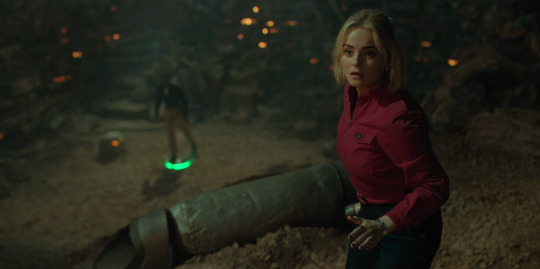
Not only has Ruby now died, but the Doctor learns that even if he does dupe the smartmine into thinking he’s not a living person, it will eventually detonate by default. The only way to stop this is now outside of the Doctor’s control, sort of. He must convince Mundy to surrender. Since the mine belongs to the Anglican Marines, only their surrender will disarm the device. Otherwise- boom. The Doctor explains to Mundy that the war they’re fighting is with themselves. The Villengard algorithm has been tricking the Marines into attacking themselves to keep them buying their product. It’s a war being waged against nothing all in the pursuit of profit.
Mundy asks the Doctor for proof which is where the Doctor’s stance on faith comes into play. But I feel like the actual conversation the Doctor is having in that moment is that faith is both a good and a bad thing. It’s not that he’s saying it’s bad for someone to have faith in God, but that it’s bad to let faith do your thinking for you. Splice has faith in her daddy. The Doctor and Ruby have faith in one another. Faith can strengthen us as people. But when it’s used to justify not considering deeper truths, it’s a hindrance. I feel like this is very in line with things we’ve heard the Fourth and Tenth Doctor’s say about religion in the past. I will admit though, I am an atheist, so I can’t speak from the perspective of a person with faith.
When Mundy tries to send evidence back to command, it’s intercepted by the algorithm and overruled. The machine has taken over and the smirking face of Susan Twist shows no signs of compassion leaking through. But with the Doctor connected to the machine and his hand connected to the remains of Vater, he’s able to send Vater into the algorithm. As Vater battles the ghost in the machine, I was reminded of “The Doctor’s Wife,” when the TARDIS re-enters her body and destroys House from the inside. In fact, lots of this episode reminded me of previous Doctor Who. The short war fought on the basis of a lie reminded me of “The Doctor’s Daughter.” The message about unchecked capitalism reminded me of “Oxygen.” And of course there’s the mine calling back to Tom Baker in “Genesis of the Daleks.” Lots of what Ncuti was doing this week reminded me of Tom Baker and I mean that as the utmost compliment. He was doing stellar work here.
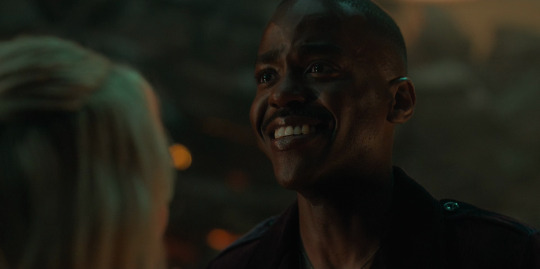
This episode had me grinning from ear to ear for the entirety of its runtime. But it wasn’t until after that I realised what it was that had me so happy. Sure, the episode was good, but I realised that it was the first time in the last 5 or 6 years that I had enjoyed a new Doctor Who episode without a giant asterisk hanging overhead. I cried tears of joy during “The Woman Who Fell to Earth,” but that was excitement for Jodie. My opinion of the episode itself was quite low. I enjoyed “The Witchfinders,” (also how cool was that reference to it in this episode?) and I enjoyed “It Takes You Away,” but I loved “Boom.” Without any hesitation, I absolutely loved it.
While the RTD2 era has been a marked improvement, I have had a few reservations. Mostly that it has so far felt like they’ve been trying way too hard. Trying too hard to have fun. Trying too hard to be funny. Trying too hard to be action-packed. I hope that the people in charge have seen the fan reaction to Boom for what it is. You don’t need massive budgets. You can do smaller stories with simple sets. The fans will respond well when you nail the tone and writing. Even Ncuti Gatwa said that while he was confused the entire time shotting the episode, it ended up being his favourite of the season. This felt like the most Doctor Who episode of Doctor Who that I’ve watched since Moffat left, and I’m including the new Davies stuff in there. This is what I meant when I said I wish Davies would chill the fuck out. Stop trying so hard.
Where this falls short for me is it highlights how insular the show has been since it returned. Eight episodes, six by the same writer, one by a former showrunner, and the remaining one is shared by two new authors. Why? I’ll be honest, Davies has never been my favourite Doctor Who writer. He’s a strong producer who writes people well. But when it comes to his episodes, other than “Midnight,” he’s never written one I would call a favourite. This is just a personal preference. When they announced his return, I was more excited for a return to competence than a return to classic writing. We could use new blood in the writer’s room. Even Chris Chibnall could see that, and he did hire some pretty good talent. My two favourite episodes from his era are written by people new to the show. More of that, please.
In truth, bringing Moffat back was a good choice. Unlike Davies, Moffat has written some of my favourite Doctor Who. And as with most anyone who has written the shear volume of Doctor Who as he has, he’s also written some of my least favourite Doctor Who. It’s bound to happen at that level of output. He’s not a writer without problems. His writing of female characters leaves something to be desired. But Moffat writing under a different showrunner, with an editor? Total Chad material. Some of the best. If they kept bringing him back like this every year or so, I would absolutely love it. Especially because it would continue to leave room for new talent.
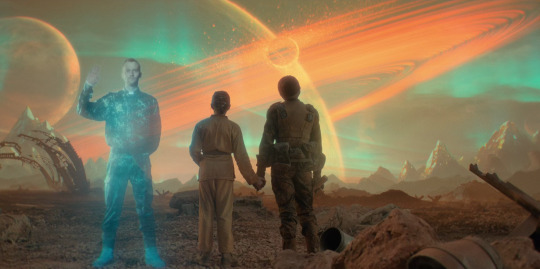
With Vater in the machine, the ambulance revives Ruby. Sadly, Mundy’s love, Canto, dies just as he proclaims his love for her. This part was a bit shallow in that it was barely set up and felt like loss for the sake of loss. As Jean Cocteau once said “Emotion resulting from a work of art is only of value when it is not obtained by sentimental blackmail.” So it’s a bit difficult to feel sorry for Mundy here, but it’s not completely void of an emotional core. It’s nice that Splice has a new caretaker in Mundy, and that’s as happy an ending as we need. What’s more important is the emotional depths we’ve experienced with the Fifteenth Doctor and Ruby. This was the moment when they were solidified for me as characters. I needed this episode. Not so much to show me that the Ncuti and Millie could do it, I knew they could. But rather to show me that the show could still do it. That RTD was still up to the task of delivering us something more than progressive happy fun. We’re not beyond the realm of complexity. And with that, I can relax a little. What else ya got, Davies?
24 notes
·
View notes
Text
Efficacy and safety of trametinib in Japanese patients with advanced biliary tract cancers refractory to gemcitabine
Summary
Gemcitabine-based therapy remains the mainstay of treatment for patients with biliary tract cancers (BTCs) with no second-line treatment(s) established yet. Aberrant activation of MAPK pathway in patients with BTC indicates its importance in BTC. Trametinib is a potent, highly selective, allosteric non-competitive inhibitor of MEK1/MEK2. In this Phase IIa open-label, single-arm study, we investigated efficacy and safety of trametinib in Japanese patients with advanced BTC refractory to gemcitabine-based therapy. All patients received oral trametinib 2 mg once daily until progressive disease (PD), death, or unacceptable toxicity. The primary objective was to determine the 12-week non-PD rate. Secondary assessments included safety, progression-free survival (PFS), overall survival (OS), and overall response rate. Targeted exome sequencing was performed to identify biomarkers for sensitivity or resistance to trametinib monotherapy. Twenty patients (median age, 61.5 years) with carcinoma of gall bladder (40%), intrahepatic (25%) or extrahepatic (30%) bile duct, and ampulla of Vater (5%) were enrolled. The non-PD rate at Week 12 was 10% (95% confidence interval [CI], 1.2–31.7); it did not reach the threshold rate of 25%. Median PFS was 10.6 weeks (95% CI, 4.6–12.1) and 1-year OS was 20.0%. Stable disease and PD were observed in 13 (65%) and seven (35%) patients, respectively. No new safety signals were reported. Although the primary endpoint was not met, prolonged PFS was observed in one patient having six somatic variants including synonymous NF1 exon 12 splice variant and a loss-of-function variant in ARID1A. Efforts to understand responsive mutations and sensitivity to targeted therapies are warranted.
This article is protected by copyright. All rights reserved.
http://ift.tt/2zvcvuM
0 notes
Text
Splice looks like she's cosplaying Rey from Star Wars.

9 notes
·
View notes
Text
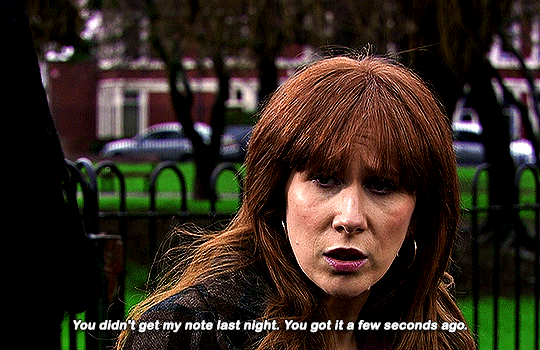
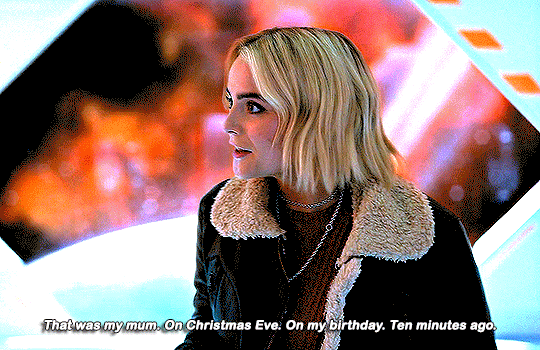
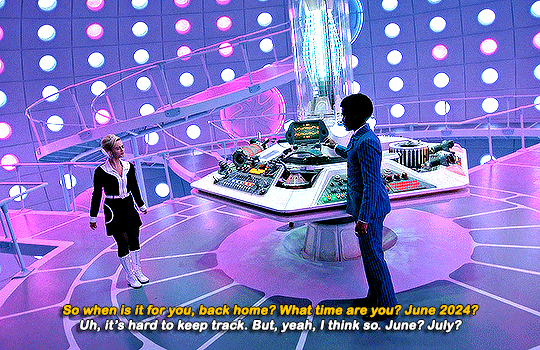

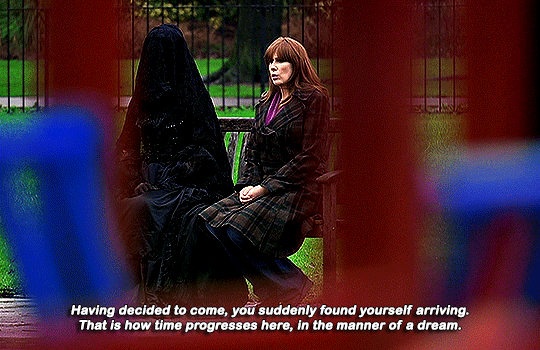
DOCTOR WHO (2005-)
#dwedit#doctor who#usertennant#userteri#userveronika#userdiana#usertreena#donna noble#ruby sunday#fifteenth doctor#splice alison vater#mundy flynn#john francis vater#*#normally dw is SO careful to have the dates more or less line up with our present day#so this is. interesting#and of course i had to throw in the donna scene for all the tv theory fans#anyway! that's enough for me today. goodnight <3
728 notes
·
View notes